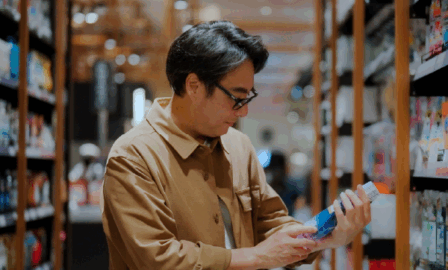Winning Strategies to Diversify Sales in CPG and Retail
Download the full eBook on Diversifying Sales in CPG and Retail here for a visual display of the contents in this post and more information on the four successful initiatives for winning companies to implement!
Modern trends are challenging companies to quickly transform and reimagine their businesses, and the need to diversify sales in CPG and retail is becoming more clear every day. An ongoing theme that we’re hearing today is that the industry is “transforming.”
It’s changing to adapt to consumer, retailer, technology, and other trends that have never been moving faster. And the stakes have never been higher. CPG and retail companies are working in a world where consumers will switch brands if the one that they want isn’t available in the store. A world where the expectation of shipping time is down to a single day. A world where a single event related to product quality can destroy decades of brand building.
Then, COVID-19 is thrown into the mix. One of my favorite comics that I saw in the last few years was a multiple-choice question: Who was the leader of digital transformation at your organization? A – the CEO. B – the CIO or CTO. C – COVID 19.
As a result of all of this and more, companies are seeking to transform how they operate and reimagine their business to address the need for flexibility, the need for agility, and the need to be consumer-centric. Consumer demand has evolved significantly in the past few years. We’re seeing consumers expecting more from the companies they buy from – seeking value, convenience, sustainability, and personalization, and more. As a result, brands are finding ways to stand out among competition and meet those evolving needs of the consumer. Companies are looking to diversify sales to better meet consumers’ demands and expectations and to also provide them with a frictionless experience both in stores and online.
Consumer Trends Shaping CPG and Retailer Investment
Personalized Shopping
First, let’s think about what’s happening in the sales world: consumers are used to personalization, and it’s clear that effective use of personalization is driving consumer loyalty, which is harder than ever to find and maintain. They are expecting the product that they want, when and how they want it – and you could say the same for messaging and engagement outside of a buying experience.
Additionally, you have the growth of connected experiences in the space, where companies are delivering value to consumers beyond the product and also being able to collect data from those connected experiences to better the product and proposition. Take Gatorade, for example. Their GM recently shared that they think of themselves less as a sports drink company and more as a leader in athletic intelligence. They are surrounding their athlete consumer with opportunities, launching things like sweat patches that are connected to an app and inform users about their sweat profile.
Retail Omnichannel Investments
At the same time, retailers are “all in” on omnichannel capabilities. Retailers are trying to deliver the best experience in store and online and provide tools and tracking capabilities across both – and they are moving FAST.
It’s not just the mega brands with large capex capabilities that are changing here. Shopify found that 33% of brands that use their tools are prioritizing omnichannel order fulfillment over traditional models in the next year. Additionally, 50% of their retailers are planning to increase their investment in digital channels beyond the store, including social commerce, custom mobile apps, live streaming, and more.
DTC
We’re also seeing a maturation in how CPG companies think about their own sales channel – a direct-to-consumer (DTC) channel. The DTC channel is not just a small, incremental revenue driver for a traditional business or a competitive imperative; rather, CPG companies are starting to think about DTC as an engine for collecting first-party data and a platform on which to engage consumers and learn. Then, they can take all those insights and make them actionable within every function.
There are a number of retail brands that are already doing this very well. For example, Sephora has been clear about the opportunities they’ve been seizing to reorganize channels through data learnings online. Many CPG executives think that retail and DTC are enemies of one another, but this couldn’t be further from the truth when the strategy is approached differently.
Successful Initiatives to Diversify Sales in CPG and Retail
So, how are companies organizing to address these trends? And what are some of the key initiatives that winning companies are spinning up? Here’s a quick list, but download the free eBook to view the full piece and more information about each of the below:
- Clear Channel Strategies
- Seamless eCommerce Experience
- Strategic Omni-Investments
- Frictionless Buying
Diversifying sales is a key consideration in the CPG and retail industries. Lack of alignment across channels will not meet consumer demand or expectation – rather, companies need to be strategic in their integrated omnichannel selling to retain a competitive advantage and succeed in the DTC space today.
Subscribe to Clarkston's Insights



